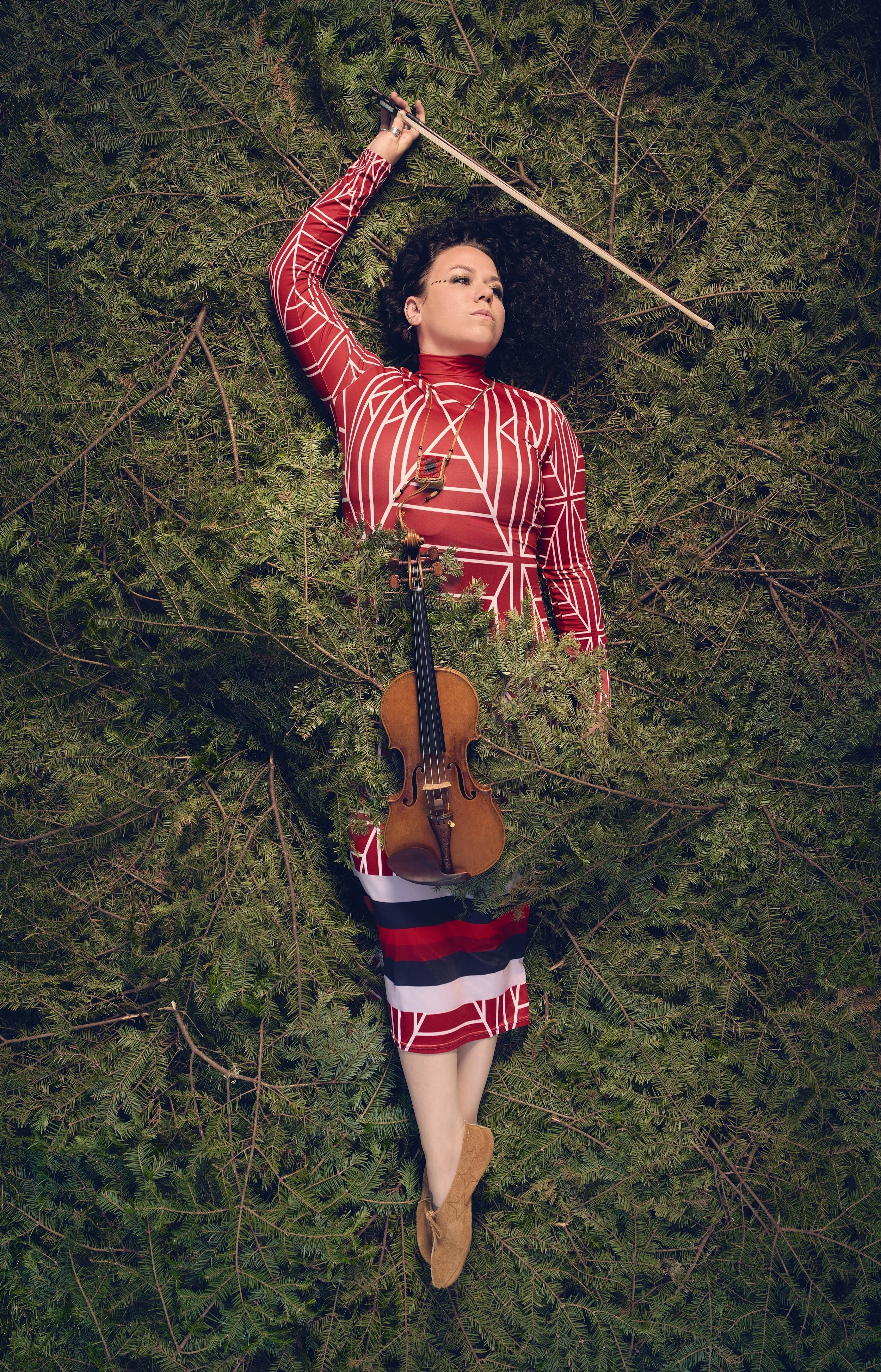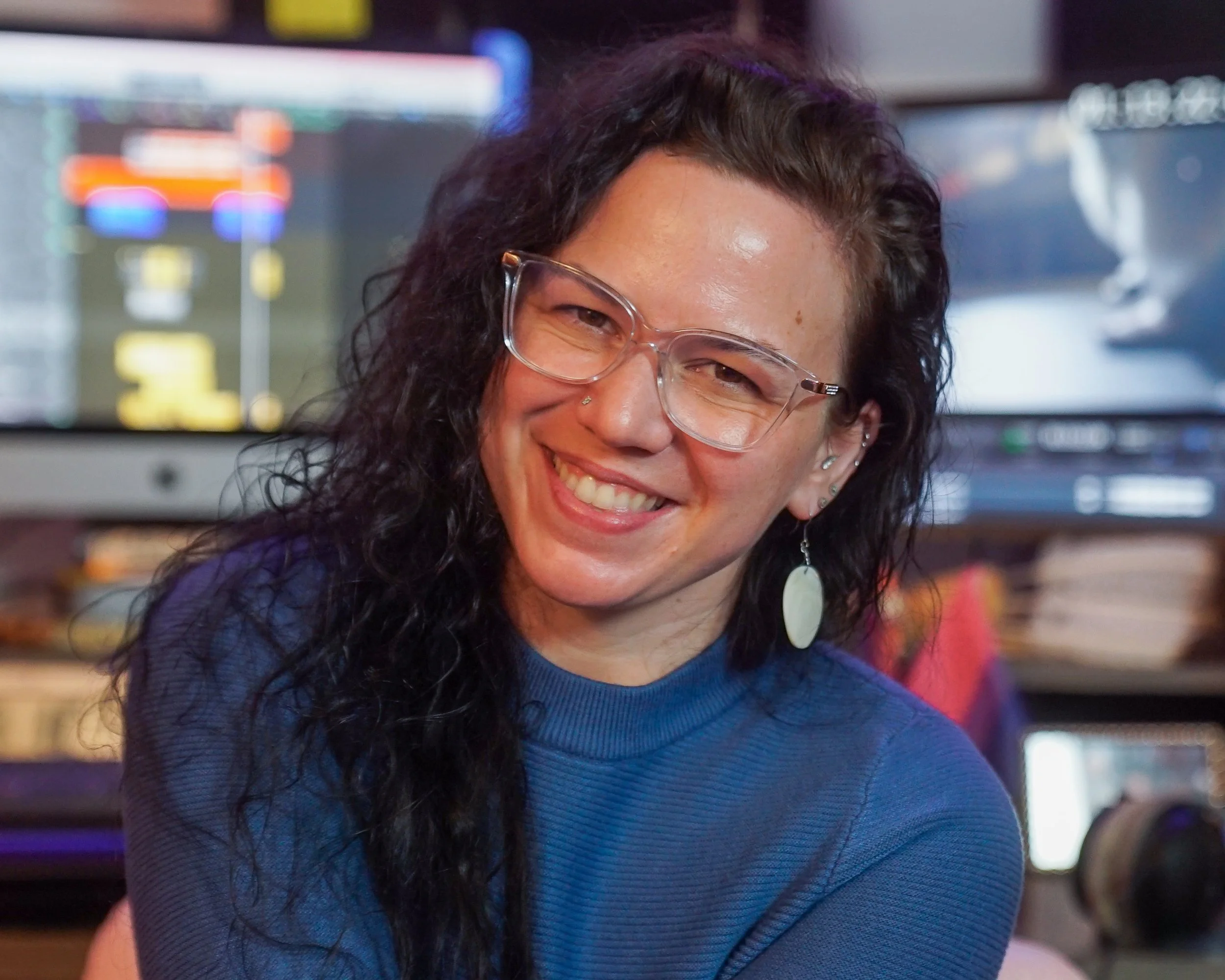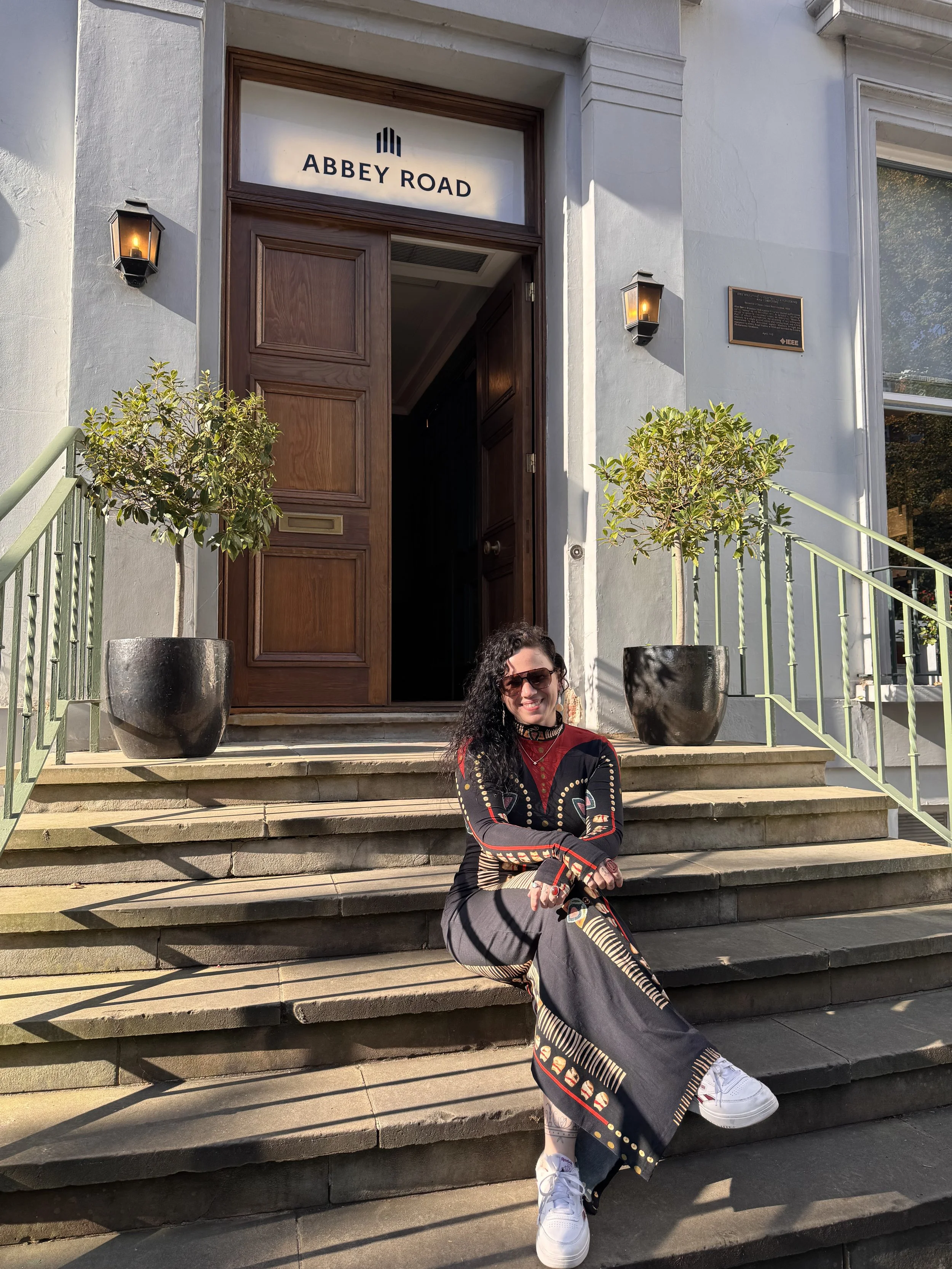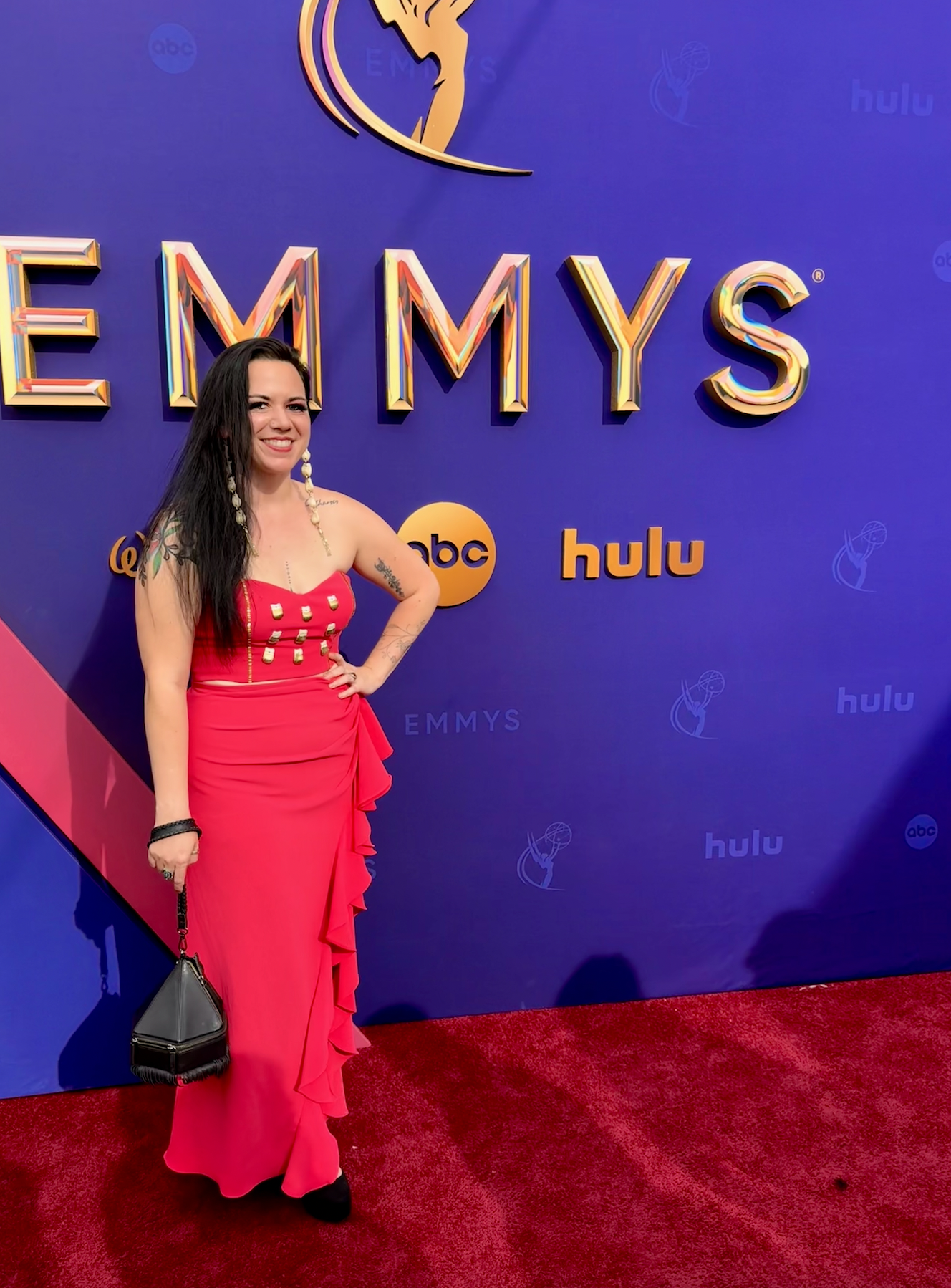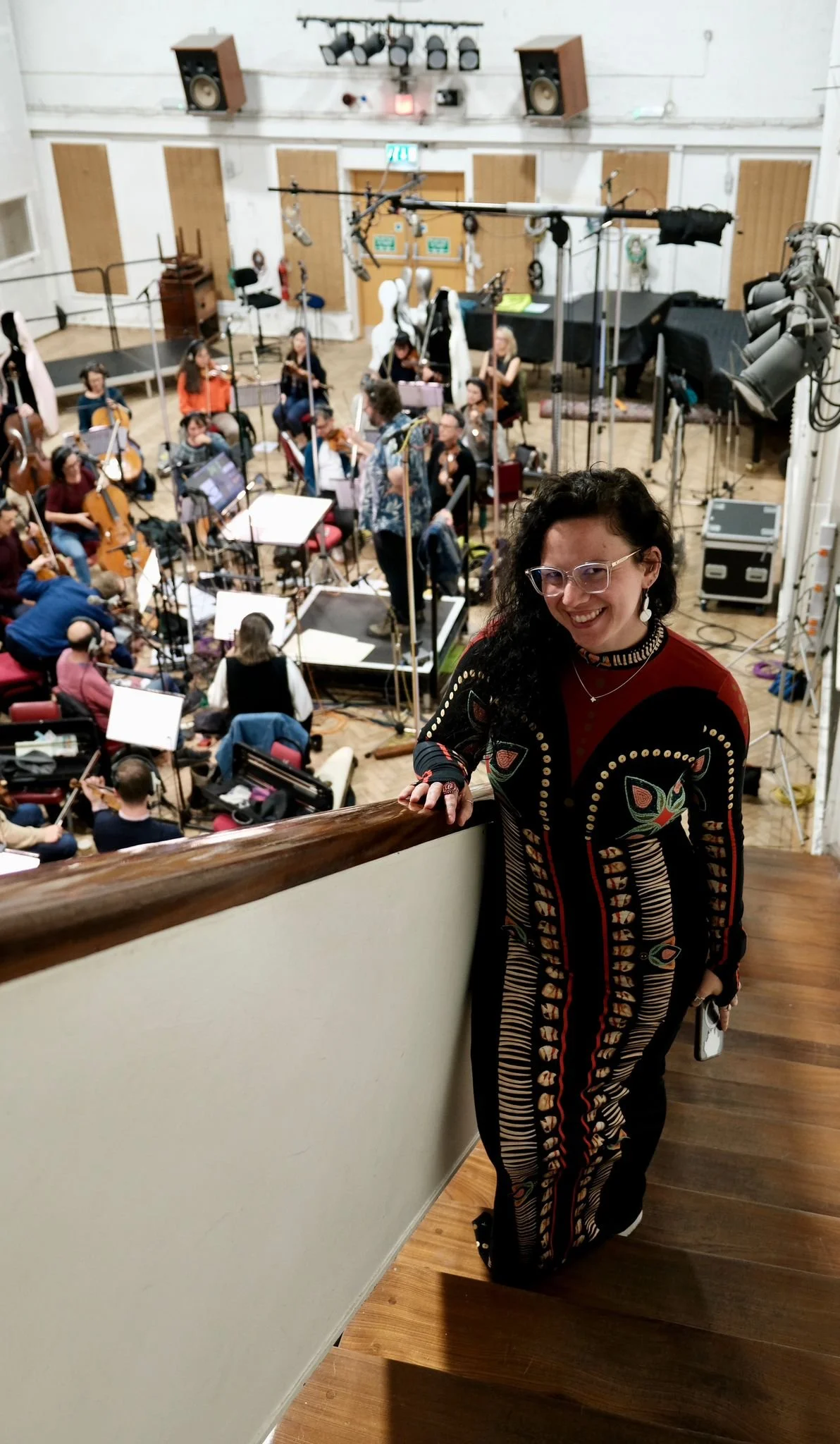A First Nations Composer Bridging Tradition and Modernity Through Music
This Indigenous Peoples Day, Canadians Abroad honors Geneviève Gros-Louis, a Los Angeles–based First Nations composer, producer, and violinist from the Huron-Wendat Nation. Through her music, Geneviève builds bridges between generations, between worlds, and between tradition and modernity.
A graduate of McGill University, she has composed for major productions including National Geographic’s Life Below Zero: First Alaskans, Magnolia Pictures’ A Savage Art: The Life & Cartoons of Pat Oliphant, and the Canadian documentary Reclaim My Skin. Her most recent score for Guardian of the Land reimagines the Bigfoot legend through the spiritual lens of the Nch'i-Wána peoples. Just last week, she recorded at the iconic Abbey Road Studios, which she described as “the most incredible experience of her life so far”, with world champion hoop dancer and flutist Tony Duncan, an extraordinary milestone that underscores her growing global influence. “This was my debut album with Audio Network, who was the company who brought me there.” shares Geneviève, with tears in her eyes.
But at the heart of her work lies something deeper: a commitment to honoring her Wendat heritage and uplifting Indigenous voices through sound and storytelling.
Finding Her Voice Through Heritage
“Finding my voice as a composer has been one of the most rewarding journeys of my life,” Geneviève says. “I grew up as a violinist, performing in orchestras for over 15 years. But when I began composing, I realized there was a part of myself I hadn’t yet brought into my music, my Wendat heritage.”
In her compositions, Geneviève weaves traditional instruments, many gifted by family and friends, with contemporary scoring. “In Wendat culture, the drum represents the heartbeat,” she explains. “That pulse is at the center of my music. It’s not just about sound, it’s about honoring the stories and people they come from.”
Moments That Move and Heal
Her performances at the Cannes Film Festival and Paris Fashion Week are powerful examples of art as ceremony. At Cannes, she was commissioned to compose music honoring the Osage people before the premiere of Martin Scorsese’s Killers of the Flower Moon. “It became a moment of ceremony, healing, and storytelling in a space that rarely hears these narratives,” she says.
At Paris Fashion Week, Geneviève collaborated with designer Mary Kelsay (MEKA) on a project honoring Missing and Murdered Indigenous Women, Girls, and Two-Spirit People (MMIWG2S). “In many Indigenous cultures, red is the color the spirits can see, it calls back those who have been taken from us,” she shares. The collaboration went on to raise over $250,000 for survivors of domestic violence and toured museums across North America.
Art as Advocacy and Revitalization
Geneviève’s work consistently amplifies conversations around representation, mental health, and healing through creativity. Her production The Healing Power of Art united musicians, dancers, and visual artists to explore how expression can transform pain into strength. “By the end of the night, there wasn’t a dry eye in the room,” she recalls. “Art can be both a mirror and a bridge, it reflects who we are while connecting us to one another.”
This year, she is also releasing Wendat Endi’, an album dedicated to the revitalization of Wendat language and music. Featuring collaborations with Wendat artists and ancestral recordings, it captures the spirit of cultural continuity. One of her most emotional performances was at Parliament in Québec for Indigenous Peoples Day. “Seeing my people sing along brought me to tears,” she says. “That’s exactly what I hoped for, music that uplifts our people and keeps our traditions alive.”
Carrying the Heartbeat Forward
As an artist and advocate, Geneviève believes in the transformative power of authentic representation. “People are starting to listen to Indigenous stories, but there’s still so much more to share,” she says. “Each nation has its own language, songs, and worldview. Our stories are not monolithic, they are living, breathing expressions of who we are.”
Her vision is one of healing, inclusion, and progress: “A drumbeat, a melody, a dance: each carries the power to shift hearts and minds. Through art, we can both honor our past and imagine a better future.”
This Indigenous Peoples Day, we celebrate Geneviève Gros-Louis, a visionary composer whose music keeps the heartbeat of her people alive, while inspiring listeners around the world.

